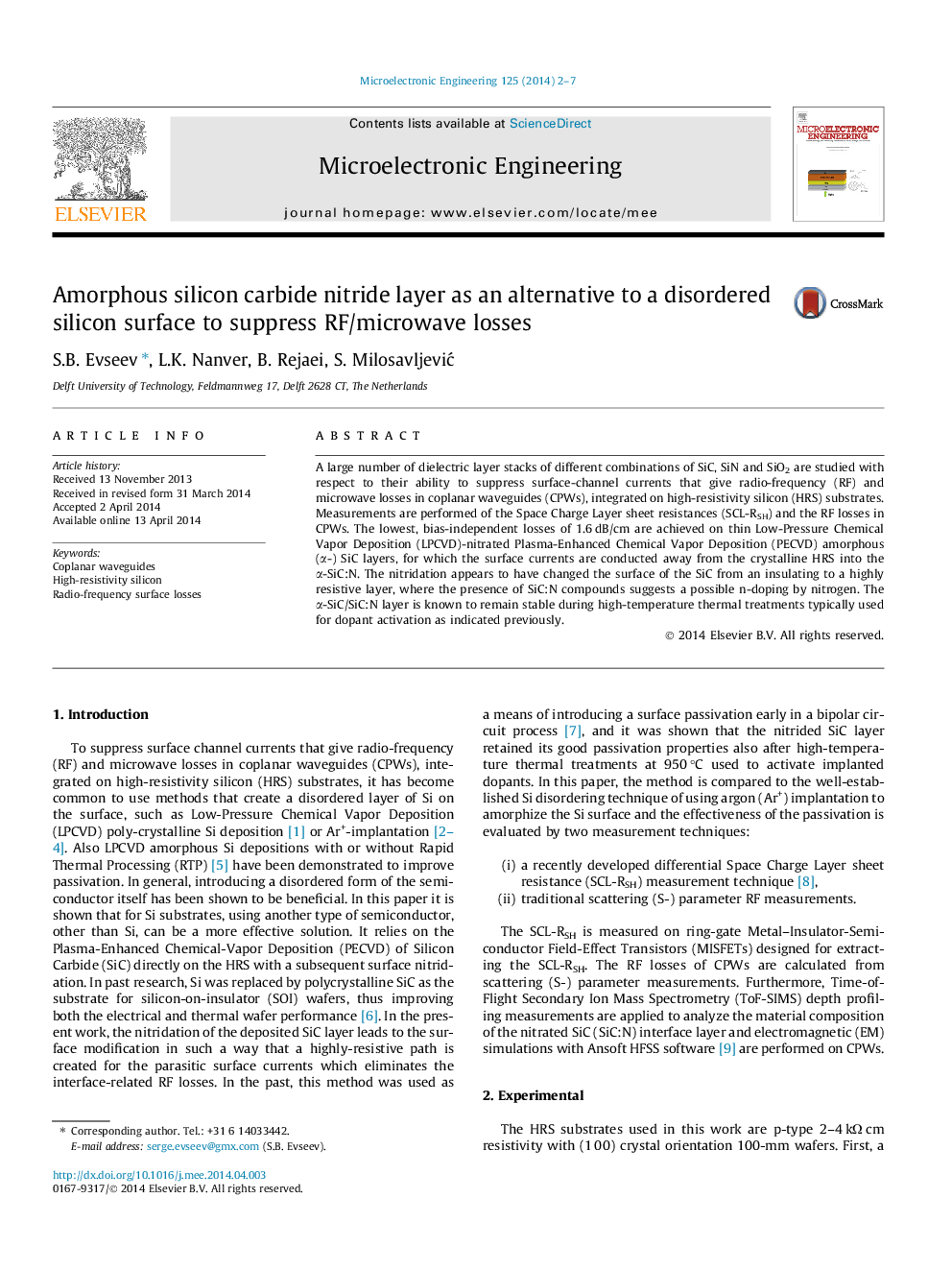| کد مقاله | کد نشریه | سال انتشار | مقاله انگلیسی | نسخه تمام متن |
|---|---|---|---|---|
| 542518 | 1450356 | 2014 | 6 صفحه PDF | دانلود رایگان |

• An alternative thermally-stable RF passivation method is presented.
• The method relies on placing the surface currents in a high resistive region.
• The lowest RF losses are achieved for the thin nitrated amorphous SiC layers.
• The nitridation changed the SiC surface from an insulating to a conductive layer.
• The presence of 10% SiCN and 90% SiC compounds suggests n-type doping by nitrogen.
A large number of dielectric layer stacks of different combinations of SiC, SiN and SiO2 are studied with respect to their ability to suppress surface-channel currents that give radio-frequency (RF) and microwave losses in coplanar waveguides (CPWs), integrated on high-resistivity silicon (HRS) substrates. Measurements are performed of the Space Charge Layer sheet resistances (SCL-RSH) and the RF losses in CPWs. The lowest, bias-independent losses of 1.6 dB/cm are achieved on thin Low-Pressure Chemical Vapor Deposition (LPCVD)-nitrated Plasma-Enhanced Chemical Vapor Deposition (PECVD) amorphous (αα-) SiC layers, for which the surface currents are conducted away from the crystalline HRS into the αα-SiC:N. The nitridation appears to have changed the surface of the SiC from an insulating to a highly resistive layer, where the presence of SiC:N compounds suggests a possible n-doping by nitrogen. The αα-SiC/SiC:N layer is known to remain stable during high-temperature thermal treatments typically used for dopant activation as indicated previously.
Figure optionsDownload as PowerPoint slide
Journal: Microelectronic Engineering - Volume 125, 1 August 2014, Pages 2–7